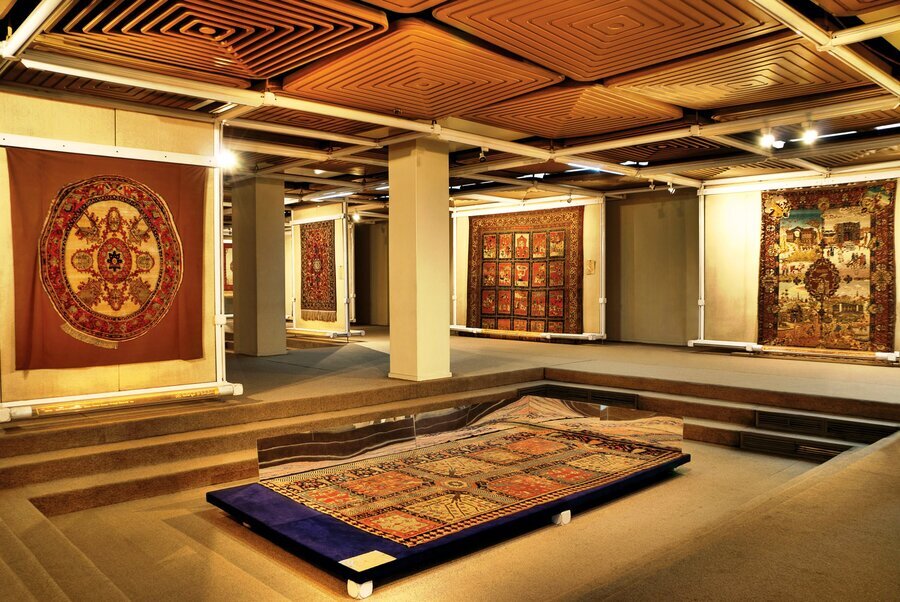Tehran museum unveils kilim treasures from 24 provinces

TEHRAN – An exhibition featuring Persian kilim carpets from 24 different provinces across Iran has opened at the Carpet Museum of Iran.
As mentioned by organizers, the event, titled “The Geography of Iranian Kilims,” intends to promote and celebrate this ancient style of flooring, bringing together a diverse collection under one roof.
The exhibition was inaugurated with a ceremony attended by Maryam Jalali Dehkordi, the deputy minister of handicrafts from the Ministry of Cultural Heritage, Tourism, and Handicrafts. It showcases 112 selected pieces from a total of 220 submissions, highlighting the intricate craft skills and rich cultural heritage of kilim weaving.
Kilims from provinces such as East Azarbaijan, West Azarbaijan, Ardabil, Isfahan, Ilam, Bushehr, Tehran, Razavi Khorasan, North Khorasan, South Khorasan, Khuzestan, Fars, Qazvin, Kurdistan, Semnan, Kohgiluyeh-Boyerahmad, Kerman, Kermanshah, Golestan, Gilan, Mazandaran, Lorestan, Hamedan, and Markazi are on display.
A museum official said that these pieces represent each region's unique styles and traditions, offering visitors a comprehensive overview of kilim artistry across Iran.
“The exhibition serves multiple purposes, including introducing visitors to the various styles of kilims from different regions, providing educational opportunities related to kilim weaving, supporting the continuity of production by local artisans, and creating a comprehensive database of kilims from various parts of the country.”
Organized in collaboration with the Carpet Museum of Iran and various non-governmental organizations from different provinces, the exhibition is open daily from 9 am to 6 pm and will run until July 3rd.
Kilims, which are flat tapestry-woven carpets or rugs, have been traditionally produced in the countries of the former Persian Empire, including Iran. Kilims can serve both decorative purposes and practical functions, such as prayer rugs. Modern kilims are also popular as stylish floor coverings in Western households today.
AM
Leave a Comment